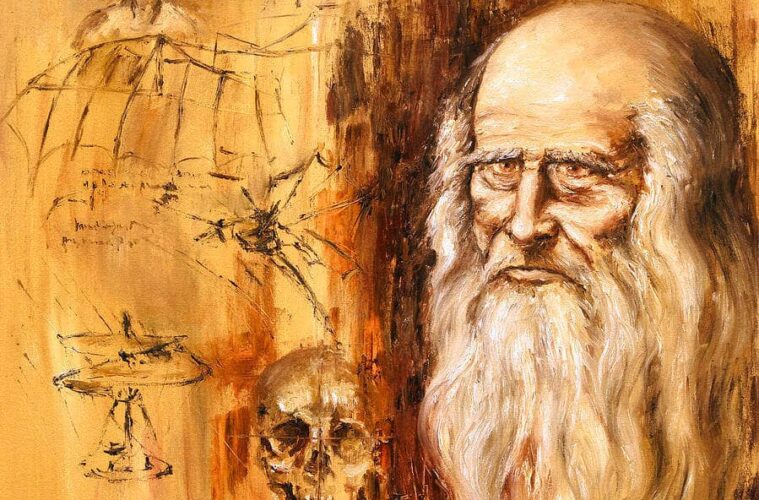Who is Leonardo da Vinci? Is he just a painter? What are his contributions to the world of art? Is his contribution only limited in this field?
Leonardo da Vinci is well renowned in his famous creations, Mona Lisa and the Last Supper. These are just a few of the tons of creations that made a huge impact on aspiring artists of the generation after him. His works of art are beyond compare, making him one of the greatest in his field. His creations depict various elements, emotions, and illusions.
But little did we know, he is not just a painter. He is also an inventor, a natural mathematics enthusiast, and a sculptor. See more information at The Architecture Designs.
Leonardo Da Vinci Inventions
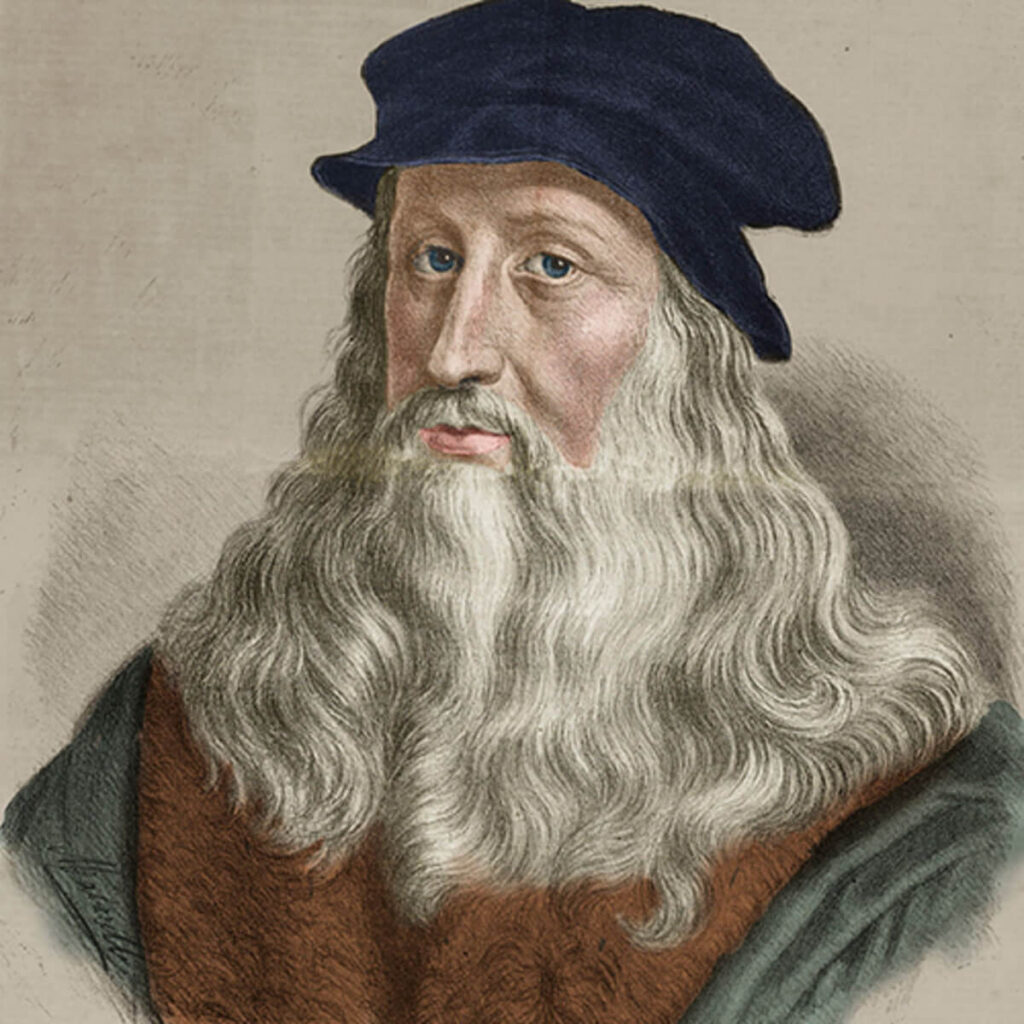
source: biography.com
Da Vinci was known to always be ahead of his time. Leonardo da Vinci’s inventions and imaginations are like four centuries ahead. Most of his works include the first image of tanks, gliders, helicopters, parachutes, diving suits and many types of weapon wars. The tank is one of Leonardo da Vinci’s inventions. You will notice on some drawings of the “Tank” that it may have some flaws and was not practical at that time. It still gave the next generation the idea and developed it over time. Though most of his works are never tested and built, up until this modern-day, there are several attempts to recreate his craftsmanship. Some of them were successful and others failed.
Who would have known that Da Vinci worked as a military engineer, even though he despised war at that time? He designed some prototypes of pieces of machinery, terrifying weapons, and other new defenses.
Ornithopter is one of Da Vinci’s inventions. It mimics a bird’s wings and works by flapping the wings to fly. Since during that era, humans did not realize the use of power to make it work and bird’s mechanism to fly was not yet fully understood.
Most of us thought of Leonardo da Vinci as solely a painter or an artist. We didn’t even recognize his huge contribution to our present life. We just limit our knowledge about him as what we just heard or saw from his arts. We never realized that behind da Vinci paintings are far more of what is superficial.
Da Vinci and Mathematics
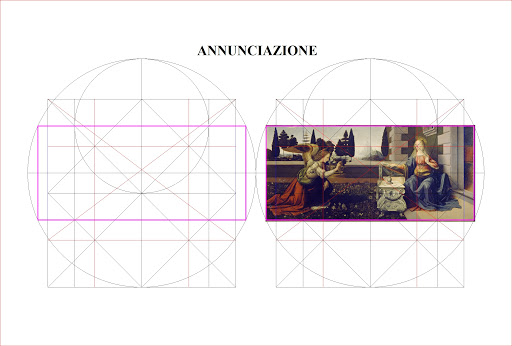
source: monalisa.org
If one will observe Da Vinci’s work of art, you will notice how mathematics had influenced his ways of creating art. From parallel lines, horizontal lines and vanishing points, to create a perfect illusion on the surface. His Last Supper Painting is also associated with mathematics. From the architecture and the lines on the floor that creates a focal point in the painting. Geometry is one of the obvious influences in Monalisa painting, how balanced the face is to his famous perfect Mona Lisa smile.
The Mystery of Mona Lisa
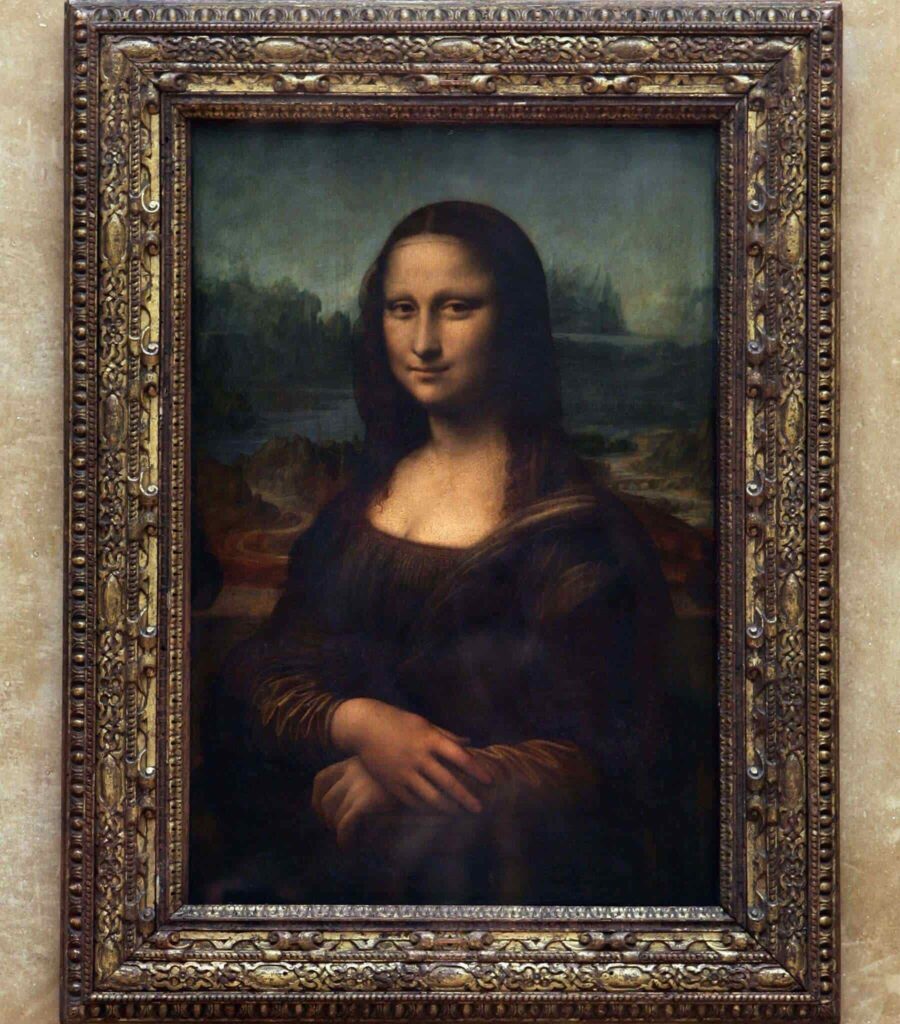
source: independent.co.uk
There is probably no better-known canvas in the world than Mona Lisa Painting. It is popular all over the world. And the expression “Mona Lisa smile” became a stable phrase, even a stamped phrase.
This is an absolute masterpiece of the Renaissance and a significant achievement in the work of the master. Leonardo himself highly valued this work and did not part with it for many years.
Most people perceive the picture as a mysterious canvas sent to us from the past by one of the most brilliant and talented artists in the history of art. The minority sees in Mona Lisa an unusually beautiful and talentedly executed picture. Its mystery lies only in the fact that we ascribe to it those features that we want to see.
The Last Supper Painting
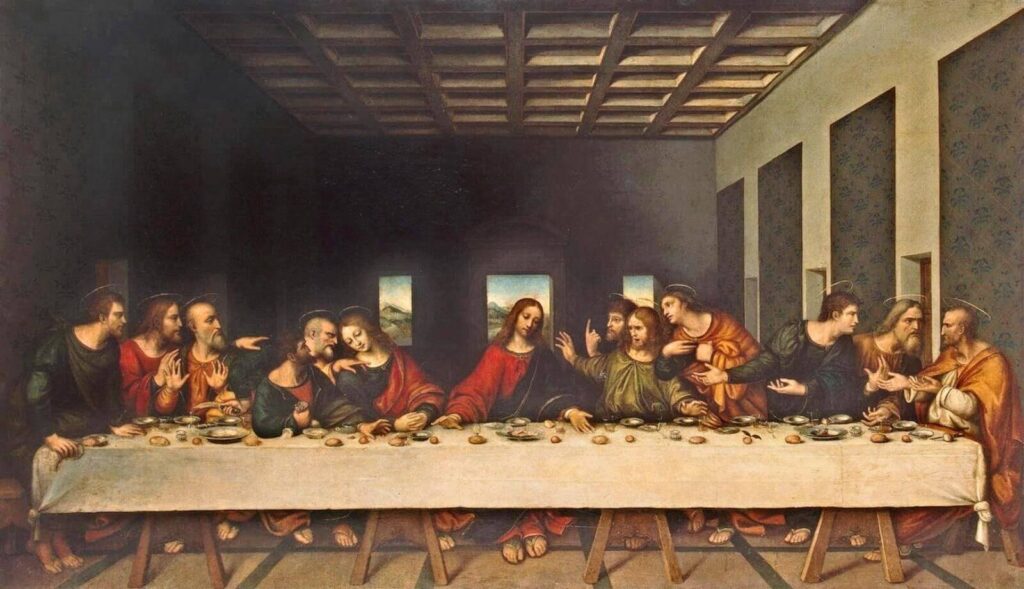
source: pinterest.com
All the mystery and complexity of this work begins from the very moment when Leonardo began to work. It seems that the master intended his work to disappear or cease to exist. The work cannot be called a fresco since paints were applied to dry plaster. Leonardo chose a strange technique of painting. Surely, he realized that the destruction of the work would begin immediately after its completion.
All attempts to restore the picture were unsuccessful. Over the past hundred years, restorers have been looking for a means to preserve work in a state it is now and prevent its further destruction. So far, unsuccessfully.
Traditional biblical plot for painting the refectory of the monastery. It is the last supper of Jesus with his disciples. The moment when the Savior uttered: “One of you will betray me.” The response of the twelve disciples of Christ is striking in its authenticity, diversity, and emotionality.
It is known that the hardest thing for the author was to find prototypes for the Savior and Judah. There was a legend saying that the same person became the model for these figures in different periods of his life. The master constantly created portraits of different people and kept the sketches and later on used them in his works.
The last supper painting is abundant with already indistinguishable details. They have symbolic meanings, special colors, and light that magically illuminates the main thing in the work and obscures everything that relates to the second and third plans. Everything in the work is a new word for painting. But the most important thing is an accurate and deep perspective, which optically extends the refectory walls, continuing it and merging with the building. This work became the first in the history of world painting with the perspective so clearly expressed and organically fit into space.
People try to find secrets encrypted in detail of the da Vinci paintings, conjectures and conspiracy theories. But this only distracts from the high artistic value of the work, its mastery of execution.
Today, the work has become inaccessible to the general public. If the research of chemists is unsuccessful, humanity will lose its great original. So, the future generations will have the idea of this masterpiece in a few copies that convey only superficial similarities.
Under the Mask of a Genius
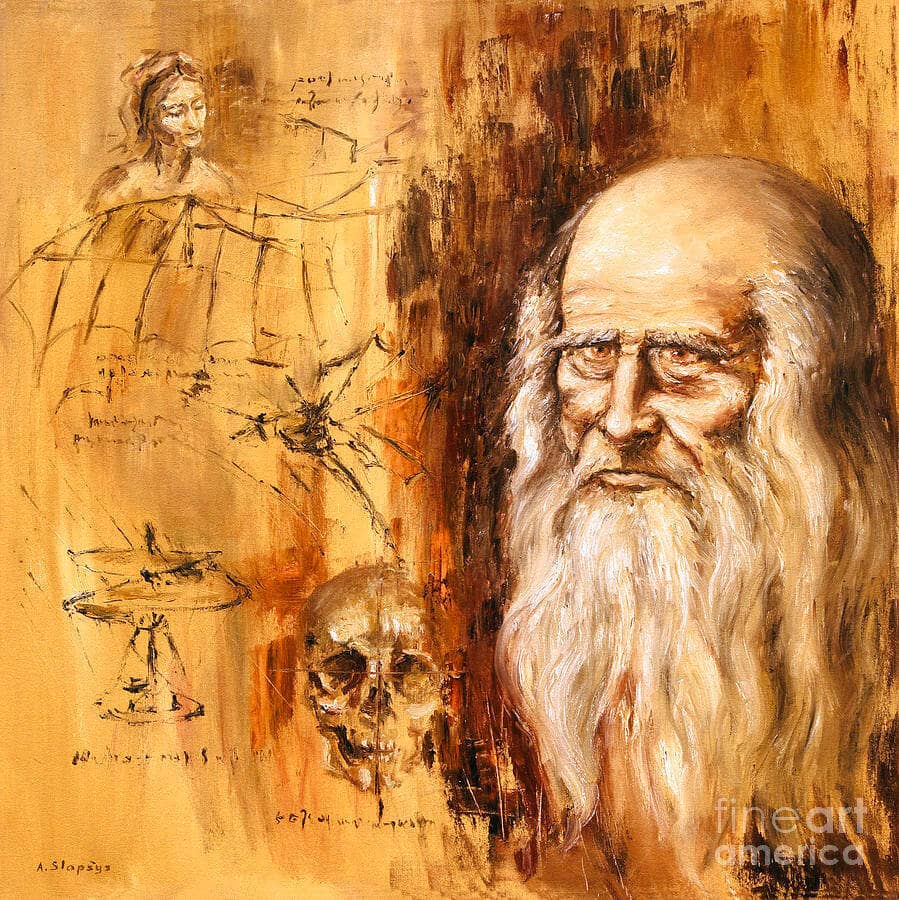
source: fineartamerica.com
Despite all his many talents, it`s worth keeping in mind that Leonardo da Vinci was the same person as we are. He had his dreams, fears, problems and advantages. The artist had a somewhat inconsistent character, he saw the interesting not the result, but the process itself. Therefore, he often did not complete what he had started.
Endowed with an incredible mind and immense talent, Leonardo da Vinci never left behind a material mention of his own appearance. There is an assumption that the painting painted in 1512 is a self-portrait of the artist. It depicts an old gray-haired man in wrinkles because then the artist was already 60 years old. But many researchers question this idea and believe that the person depicted is an enlarged portrait of one of the apostles of the Last Supper.
In any case, no one will ever know how the artist really looked in his young years. So, for all future generations, Leonardo da Vinci will forever remain a faceless genius of the Renaissance.
Explore Leonardo Da Vinci Paintings and buy oil reproductions online on 1st-art-gallery.com. Let’s discover art together! 🙂

